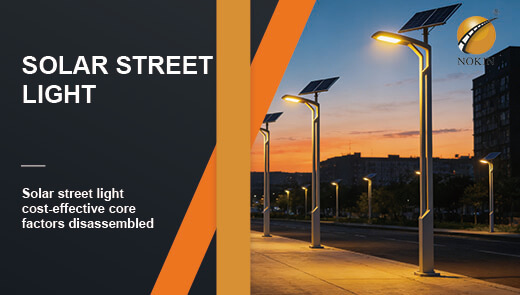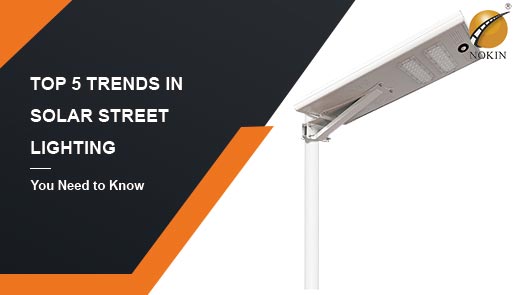How to Choose and Replace LED Light Sources in Solar Street Lights?
LED light source plays a central role in solar street light system, and its performance directly affects the lighting effect, energy consumption and service life of the street light. Choosing the right LED light source will allow solar street lights to ensure lighting quality while maximizing energy and cost savings; while replacing LED components correctly is the key to maintaining long-term stable operation of the street lights. This article will discuss in detail how to select and replace LED light sources in solar street lights, providing comprehensive and practical guidance for relevant practitioners and users.
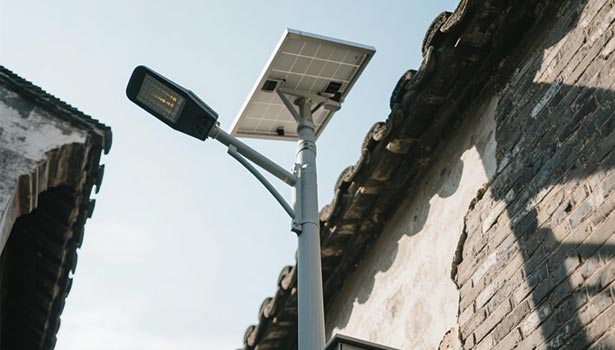
What Are the Key Points When Choosing LED Light Sources for Solar Street Lights?
Why High Lumen per Watt Saves the Whole System
High lumen is a key indicator of energy saving level of LED light source, which is important for the overall cost control of solar street light system. High lumen is a key indicator of the energy saving level of LED light source, which plays an important role in controlling the overall cost of solar street light system. Simply put, lumen reflects the amount of light an LED light source can emit per unit of power. The higher the value, the less power the LED light source consumes to provide the same level of illumination.
To 200 lm / W and 100 lm / W LED chip comparison, to achieve the same brightness, 200 lm / W chip consumes only half the power of 100 lm / W chip. This low-power characteristics of the core components of the solar street light system will have a series of positive impact: in terms of batteries, due to a significant reduction in the required power supply power, without the need for large-capacity batteries to store electricity, the battery volume and capacity can be effectively reduced; solar panels as a system of power supply, due to the decline in the power demand, the size of its area and power specifications can also be reduced accordingly.
In addition, the reduced size of the battery and panel will make the weight of the whole street light system reduced. The benefits are manifold: on the one hand, the pressure on the pole is reduced, reducing the possibility of damage to the pole due to overloading; on the other hand, during transportation, the lighter components require less transportation means, thus significantly reducing transportation costs.
Match Color to Human Comfort
The choice of color temperature is closely related to the usage scenario, and the right color temperature can enhance human comfort. Warm white light (3000-4000K) is suitable for use in residential areas, parks and alleys, etc. It has less glare and gives people a friendly, cozy feeling. Cool white light (5000-6000K), on the other hand, is suitable for areas such as highways, ports and logistics centers, where it allows fast-moving vehicles to better detect edges and improve safety. A Costa Rican resort that upgraded its streetlights from cool white to warm white saw a significant improvement in nighttime ambiance from guests and a 15% reduction in insect complaints received by the owners, demonstrating the importance of color temperature selection.
CRI and Package Type Simplified
Color Rendering Index (CRI) reflects the ability of the LED light source to restore the true color of the object, in road lighting, CRI ≥ 70 can meet the basic needs. For commercial boulevards, in order to make the skin color and other presentations more realistic, the CRI needs to reach 80. The choice of package type is also very critical, the common 3030 and 5050 two kinds: 3030 package LED, typical drive current is 150mA, the power of each chip is 0.5-1W, which is cooler and lower cost, but the number of chips is relatively large, suitable for 15-30W lamp head; 5030 package LED, typical drive current is 150mA, the power of each chip is 0.5-1W. The 5050 packaged LED, with a typical drive current of 300mA and a power of 1-2W per chip, has a high luminous flux per chip, but runs at a higher temperature and is more expensive, suitable for needs above 60W and requires a larger heat sink when used.
LED Light Source Life and Reliability Considerations
The life of the LED light source is an important consideration, the mean time between failure (MTBF) is a commonly used indicator, operating temperature, current stability and other factors will affect the life of the LED light source. When choosing, we should prioritize LED light source with good heat dissipation design and over-current protection function, which can improve its reliability in the complex working environment of solar street light.
Comprehensive Analysis of Cost and Return
When choosing LED light source, we can't just look at the initial purchase cost, the price difference between different brands and parameters is big, so we should avoid ignoring the quality for the sake of low price. It is also important to calculate the cost of long-term use, including the frequency of replacement, energy loss, etc. Although the initial cost of high-quality LED light source is higher, but because of its long life, low energy consumption, long-term return is more substantial.
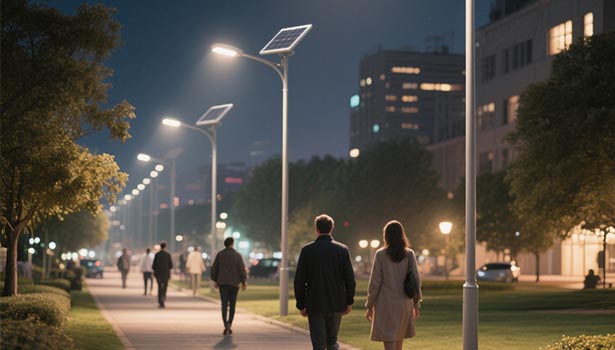
How Do You Select Compatible LED Modules for Existing Solar Street Light Systems?
Selecting compatible LED modules for existing solar street light systems requires consideration of three core dimensions: electrical, mechanical and optical, to ensure that the old and the new components are seamlessly connected to each other, and to maintain stable operation and lighting effect.
Electrical Compatibility and Driver Requirements
Electrical compatibility is the basis for matching. The 12V or 24V DC power supply specification of the system should be clearly defined, and the selected LED modules should be of low-voltage design, with rated current matching the power of the system, so as to avoid overload or insufficient brightness. At the same time, the module should be compatible with the existing PWM or constant current driver to ensure that the dimming and other functions are normal, and the communication protocol with the solar controller is consistent to achieve intelligent linkage. Check the voltage, power, interface and other parameters during the actual selection, and test the system output if necessary to prevent damage caused by mismatch.
Mechanical Mounting and Fixture Integration
Mechanical compatibility focuses on matching the details of physical adaptation. The length, width and height of the module should fit perfectly with the reserved space inside the luminaire, so as to avoid the installation being hindered or loosely fixed due to the deviation of the size; the diameter and distance of the mounting holes should be accurately corresponded to the threaded interfaces of the luminaire's base, and it is preferred to adopt the standard module with M4-M6 universal bolts, so as to minimize the modification process of the luminaire's shell, such as cutting, drilling and other modification processes.
The weight of the module must be strictly controlled within the load-bearing parameter of the lamp pole, especially for high street lamps, the over-heavy module may lead to the shift of the center of gravity of the lamp head, which may lead to the bending of the lamp pole or even toppling of the lamp pole after bearing wind load for a long period of time. The protection level of the new module should not be lower than the original IP65/IP66 standard. When installing the new module, uniformly apply thermally conductive silicone grease on the contact surfaces of the module and the heat dissipation base to enhance the heat dissipation efficiency, and at the same time replace the aged rubber sealing washers and tighten the fixing bolts according to the specified torque to ensure that the waterproof and dust-proof performance of the lamps and lanterns shell will not be affected.
Optical Performance and Light Distribution
Optical compatibility needs to match the application scenario. Choose the light distribution mode according to the road, such as wide light distribution for country lanes and narrow light distribution for main roads. Luminous flux should comply with the lighting standards, refer to the Candela distribution curve to ensure uniform coverage and avoid dark areas. At the same time to control glare, the use of anti-glare design, part of the module can be optimized through the secondary optical components of light efficiency, reduce light pollution.
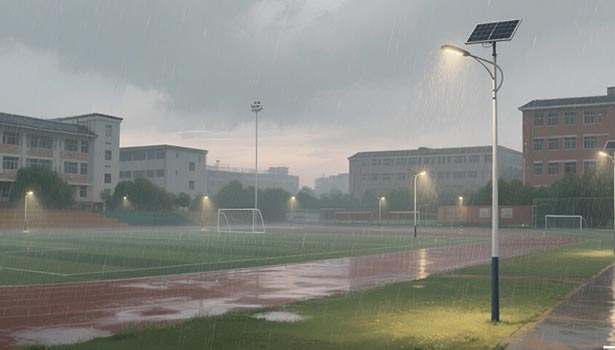
What Is the Proper Procedure for Replacing LED Components in Solar Street Light Fixtures?
Safety Protocols and System Shutdown
Replacing LED components in a solar street light system requires comprehensive Safety procedures are required to protect personnel and prevent equipment damage. System shutdown steps are critical, including disconnecting the solar panels, isolating the battery system, and verifying zero energy status. Necessary PPE such as insulated gloves, voltmeters, etc., lockout/tagout procedures, clear communication protocols between team members, and documentation of safety procedures are all required to ensure a safe and organized replacement process.
Component Removal and Installation Techniques
Proper LED removal techniques maintain luminaire integrity and allow for efficient component replacement, including removing protective covers, disconnecting electrical connections, and extracting the LED module with the proper tools, all while avoiding damage to the housing components and sealing elements. Removal of thermal interface material and surface preparation should not be overlooked to ensure optimal heat transfer between the replacement LED module and the solar streetlight heat sink. Installation steps include applying the proper thermal compound, verifying electrical connections, performing continuity tests, and taking quality control measures such as visual inspections, electrical testing, and photometric verification to ensure the quality of the installation.
Testing and Commissioning Procedures
Comprehensive testing is key to verifying the success of the LED replacement to ensure its optimal performance integration in the solar streetlight system. Initial power-up procedures include voltage measurements, current verification, thermal monitoring, etc. to confirm proper LED operation and system compatibility. Photometric testing requires the use of calibrated light meters to verify that illumination levels, uniformity, and light distribution patterns are in accordance with the specified requirements of the solar streetlight installation; functional testing includes dimming operation, control system communications, and fault detection capabilities to ensure full integration with the existing solar streetlight management system.
Documentation is also required, including test results, warranty information, maintenance records, etc., to support the ongoing management and future service activities of the solar streetlight system, as well as performance monitoring during initial operation to verify long-term reliability and identify problems that need to be corrected.
Disposal of Old LED Components and Environmental Protection Requirements
Old LED components belong to e-waste and cannot be discarded at will, otherwise they will cause environmental pollution and need to be disposed of in accordance with environmental protection regulations. The old LED components can be handed over to professional electronic waste recycling enterprises for dismantling and resource reuse. During the replacement process, it is necessary to strictly abide by the local environmental protection laws and regulations, and take up the responsibility of corporate or individual environmental protection to jointly guard the ecological environment.
Selecting and replacing the LED light source in solar street lights requires comprehensive consideration of several key points and strict adherence to the correct process. The right LED light source can improve the efficiency of the street light and reduce the cost, and the right replacement process can ensure the long-term stable operation of the street light. Only by paying attention to these aspects can solar street lights play a better role in the field of lighting and provide a reliable guarantee for night lighting in cities and villages.


